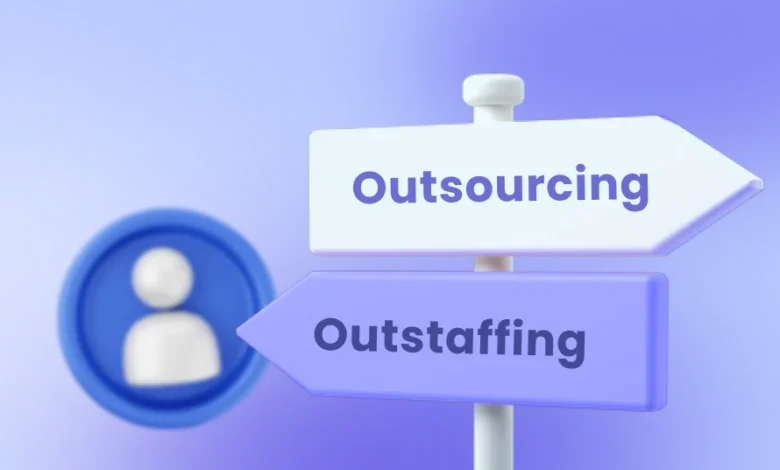Outsourcing vs Outstaffing: Which Option Is More Profitable?

In today’s rapidly evolving business landscape, companies are constantly seeking ways to optimize their operations, reduce costs, and stay competitive. Outsourcing and outstaffing have emerged as two popular strategies to achieve these goals. Both approaches involve hiring external resources to handle specific tasks or functions, but they differ significantly in terms of their structure, benefits, and potential drawbacks. In this comprehensive guide, we will delve deep into the world of outsourcing and outstaffing to help you determine which option is more profitable for your business.
Understanding Outsourcing
Outsourcing is a business practice where a company contracts a third-party service provider or vendor to perform specific tasks or functions that were traditionally handled in-house. These tasks can range from customer support and software development to accounting and data entry. Outsourcing offers several advantages that make it an attractive option for businesses of all sizes:
1. Cost Efficiency
One of the primary reasons companies turn to outsourcing is cost savings. By outsourcing tasks to regions with lower labor costs, businesses can significantly reduce their operational expenses. This includes savings on salaries, benefits, office space, and equipment.
2. Access to Global Talent
Outsourcing allows companies to tap into a global pool of talent. You can work with experts and specialists from around the world who bring diverse skills and experiences to your projects.
3. Focus on Core Competencies
Outsourcing non-core functions allows businesses to focus their internal resources and efforts on core competencies. This can lead to improved productivity and innovation within the organization.
4. Scalability and Flexibility
Outsourcing offers scalability, allowing businesses to quickly expand or shrink their workforce in response to market demands. This flexibility is particularly valuable in industries with fluctuating workloads.
5. Risk Mitigation
Sharing responsibilities with outsourcing partners can help distribute certain risks. For example, when outsourcing IT services, the vendor often takes on the responsibility for software updates, security, and maintenance.
While outsourcing offers numerous benefits, it is not without its challenges. Language barriers, time zone differences, and cultural nuances can lead to communication difficulties. Furthermore, the loss of direct control over tasks can be a concern for some businesses.
Outstaffing: A Deeper Dive
Outstaffing, on the other hand, is a business model where a company hires dedicated remote employees or teams through a specialized service provider. These employees work exclusively for the hiring company and are managed directly by its internal teams. Outstaffing provides unique advantages that set it apart from traditional outsourcing:
1. Full Control
With outstaffing, companies retain complete control over their remote teams. They can define work processes, set priorities, and integrate remote employees seamlessly into their existing workflows.
2. Cost Transparency
Outstaffing offers transparency in cost structures. You pay employees’ salaries and a service fee to the outstaffing provider, allowing you to track expenses more accurately.
3. Long-Term Collaboration
Outstaffing often leads to long-term partnerships, fostering a sense of commitment and loyalty among remote employees. This can result in higher retention rates and improved team cohesion.
4. Direct Communication
Since outstaffed employees are considered part of the hiring company’s team, communication is typically more straightforward and immediate. Language and cultural barriers are minimized.
5. Customization
Outstaffing allows companies to build specialized teams tailored to their unique needs. Whether it’s software development, digital marketing, or customer support, you can assemble the perfect team for your projects.
However, outstaffing also has its own set of challenges. It requires careful management to ensure remote employees are fully integrated into the company’s culture and processes. Additionally, there may be legal and compliance considerations, depending on the location of your outstaffed team members.
Outsourcing vs Outstaffing: A Comparative Analysis
Now that we have a clear understanding of both outsourcing and outstaffing, let’s compare them in various aspects to determine which option is more profitable for your business.
Cost Considerations
Outsourcing: Generally, outsourcing offers immediate cost savings due to lower labor costs in offshore locations. Companies can also avoid the overhead costs associated with hiring in-house employees.
Outstaffing: While outstaffing may not provide the same level of cost savings as outsourcing, it offers more cost transparency. Companies can see exactly how much they are paying for remote employees, making it easier to budget effectively.
Control and Management
Outsourcing: With outsourcing, you relinquish a degree of control over the day-to-day management of tasks. Vendors often manage their own teams, and communication can be less direct.
Outstaffing: Outstaffing provides greater control and a more direct line of communication. You can manage remote employees as if they were in-house staff, ensuring alignment with your company’s objectives.
Flexibility and Scalability
Outsourcing: Outsourcing offers scalability in terms of quickly adding or reducing resources as needed. This is ideal for short-term projects or tasks with variable workloads.
Outstaffing: Outstaffing provides flexibility and scalability similar to outsourcing but with the added benefit of long-term collaboration. You can build dedicated teams that grow with your business.
Skill Set and Expertise
Outsourcing: Outsourcing allows access to specialized skills and expertise from around the world. Vendors often have a broad talent pool to choose from.
Outstaffing: Outstaffing enables companies to assemble teams with specific skill sets tailored to their projects. This customization can lead to higher-quality outcomes.
Risk and Compliance
Outsourcing: Outsourcing vendors often handle compliance issues such as data security and legal requirements. However, companies may still bear some risk related to vendor performance.
Outstaffing: Outstaffing requires diligent management of legal and compliance matters, depending on the location of remote employees. Companies must ensure adherence to employment laws.
Communication and Integration
Outsourcing: Language and cultural differences can sometimes lead to communication challenges. Companies must invest in effective communication strategies.
Outstaffing: Communication is typically more straightforward and immediate with outstaffed employees, as they are considered an integral part of the hiring company.
Making the Choice: Which Is More Profitable?
The decision between outsourcing and outstaffing ultimately depends on your specific business needs, objectives, and priorities. Here are some key considerations to help you make an informed choice:
– Nature of Work: For short-term projects with specific tasks, outsourcing may be a cost-effective solution. However, for long-term partnerships and complex projects, outstaffing can offer better control and customization.
– Budget: If your primary concern is immediate cost savings, outsourcing may be the preferred choice. But if you value transparency and long-term cost predictability, outstaffing might be more suitable.
– Management Style: Consider your company’s management style. If you prefer a hands-on approach and want full control over your remote team, outstaffing is the way to go. If you are comfortable delegating tasks and management, outsourcing may suffice.
– Skill Requirements: Assess the skill sets required for your projects. If you need access to a broad range of skills, outsourcing can provide diversity. However, if you require specialized expertise, outstaffing allows you to build a team with precise skills.
– Risk Tolerance: Evaluate your risk tolerance and compliance requirements. Outsourcing vendors often handle certain risks, while outstaffing may require more involvement in legal and compliance matters.
In conclusion, the choice between outsourcing vs outstaffing is not a one-size-fits-all decision. Both approaches have their merits, and the most profitable option for your business depends on your unique circumstances. By carefully weighing the factors mentioned above and aligning them with your business goals, you can make an informed choice that maximizes profitability and efficiency.
Remember that successful outsourcing or outstaffing partnerships require clear communication, effective project management, and a shared commitment to achieving your business objectives. Whichever path you choose, it’s essential to nurture the relationship and adapt your approach as your business evolves.




